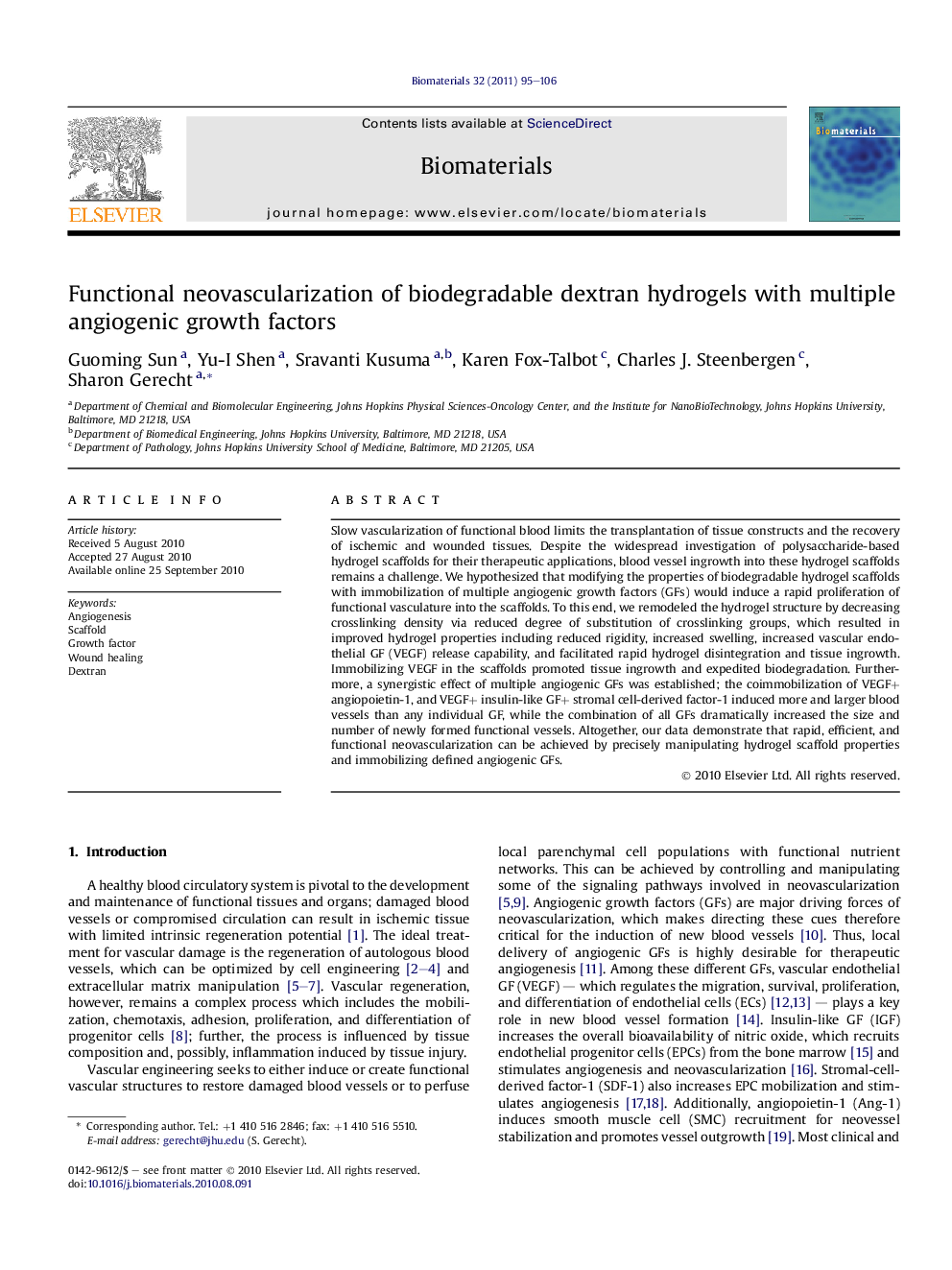| Article ID | Journal | Published Year | Pages | File Type |
|---|---|---|---|---|
| 8404 | Biomaterials | 2011 | 12 Pages |
Slow vascularization of functional blood limits the transplantation of tissue constructs and the recovery of ischemic and wounded tissues. Despite the widespread investigation of polysaccharide-based hydrogel scaffolds for their therapeutic applications, blood vessel ingrowth into these hydrogel scaffolds remains a challenge. We hypothesized that modifying the properties of biodegradable hydrogel scaffolds with immobilization of multiple angiogenic growth factors (GFs) would induce a rapid proliferation of functional vasculature into the scaffolds. To this end, we remodeled the hydrogel structure by decreasing crosslinking density via reduced degree of substitution of crosslinking groups, which resulted in improved hydrogel properties including reduced rigidity, increased swelling, increased vascular endothelial GF (VEGF) release capability, and facilitated rapid hydrogel disintegration and tissue ingrowth. Immobilizing VEGF in the scaffolds promoted tissue ingrowth and expedited biodegradation. Furthermore, a synergistic effect of multiple angiogenic GFs was established; the coimmobilization of VEGF+ angiopoietin-1, and VEGF+ insulin-like GF+ stromal cell-derived factor-1 induced more and larger blood vessels than any individual GF, while the combination of all GFs dramatically increased the size and number of newly formed functional vessels. Altogether, our data demonstrate that rapid, efficient, and functional neovascularization can be achieved by precisely manipulating hydrogel scaffold properties and immobilizing defined angiogenic GFs.
